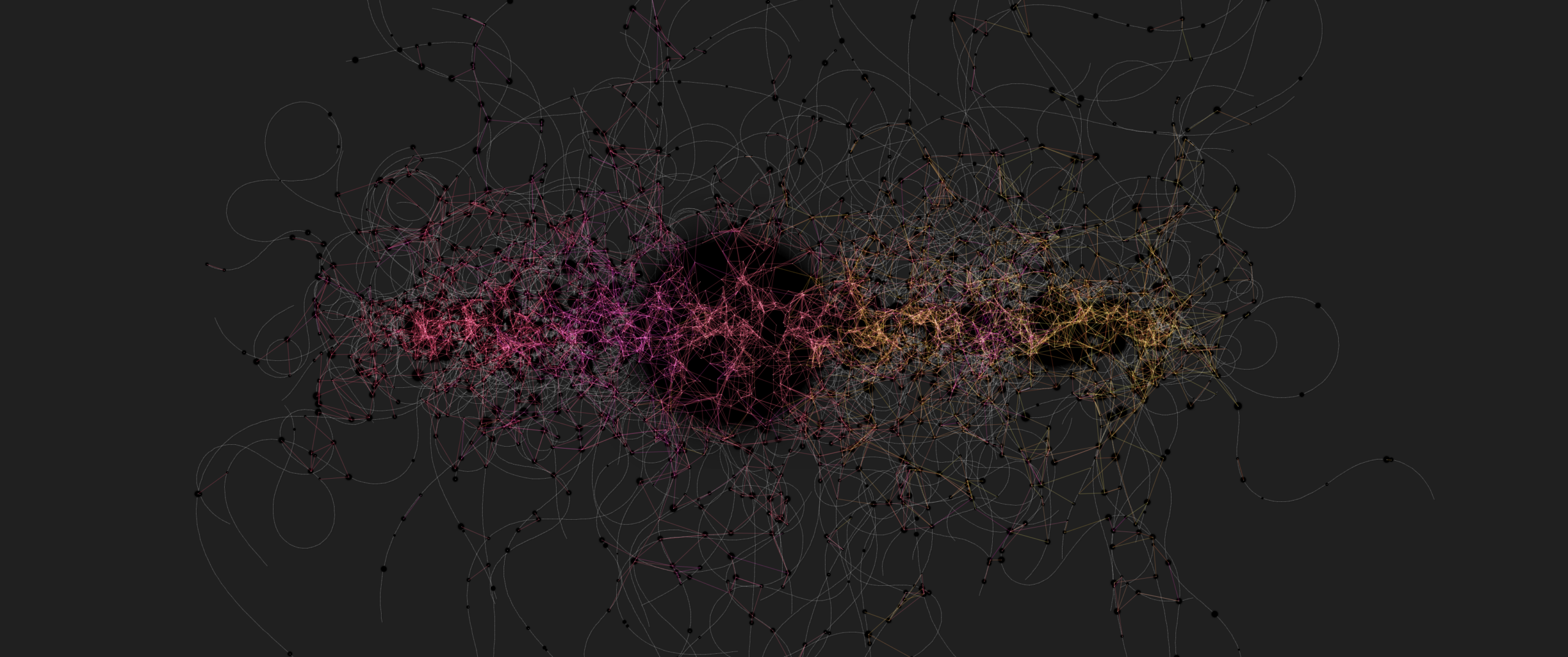A darker, more contemplative return to the Node.Garden from 2004.



10,000 nodes are organized along snaking spine objects. The spines emanate from a computationally defined path. The path is a ring in some cases and a straight horizontal line. in others.
The rendering process for this algorithm uses a multi-step approach. One by one, layers of the composition are calculated and drawn. First, spine objects are created. As they extend into the darkness, nodes are randomly created and positioned along the path. Nodes are then connected. Connection to nearby nodes is prioritized. A culling procedure hides nodes that are completely enclosed within another, larger node. Next a shadow glow image is applied at each node location sized according to node mass. Connections are rendered as colored lines. Another shadow glow image is applied. Finally, a specular highlight is applied to each node in the garden. The composition is then complete.


To the waters and the wild
With a faery hand in hand,
For the world’s more full of weeping than you can understand.
~William Butler Yeats
A version in black and white that uses the original specular image. It also features a dense node growth along the spine paths.

When crafting the logic and parameters of the algorithm, I search for a living aesthetic. I want the resulting compositions to appear alive with intelligence. This is best when it is purely a visualization of the mathematics used to generate them.



These compositions above were captured after the fourth rendering step before any node images are applied.


I am often surprised by my own code. Reworking these older sketches is like walking in an abandoned garden alive and wonderful without me.
Download Source Code
Programmed in Processing
In Albuquerque, New Mexico, USA
Around 1:44pm February 3, 2020












